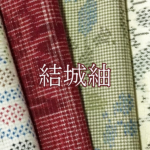Embedded within Japan’s rich traditional culture, Tobe ware is known for its unique beauty and practicality. This article delves deep into the allure of Tobe ware, exploring its history, production area, manufacturing process, and where it can be purchased. For those interested in Japanese traditional crafts and seeking beautiful pottery, Tobe ware is an unmissable gem.
What is Tobe ware?
Tobe ware is pottery manufactured mainly around Tobe Town in Ehime Prefecture, Japan, with a history dating back to the Edo period. It is renowned for its simple yet sophisticated design and usability. Characterized by white clay adorned with blue and green paintings, Tobe ware ranges from everyday use to special gift items.
The Production Area of Tobe ware
The main production area for Tobe ware is Tobe Town in central Ehime Prefecture. The region is abundant in high-quality pottery stone, which has significantly contributed to the development of Tobe ware. Blessed with a warm climate and rich nature, Tobe Town offers an ideal environment for the thriving pottery culture.
The History of Tobe ware
The history of Tobe ware began in 1777 when the first generation Yoshidayakuhisaemon discovered pottery stone and started pottery production. Since then, Tobe ware has been passed down through numerous kilns, continuing to be cherished up to the present day.
The Manufacturing Process of Tobe ware
The manufacturing process of Tobe ware is complex and requires skilled craftsmanship. Below are the main steps:
- Material selection: Select high-quality pottery stone and grind it into fine particles.
- Clay preparation: Mix the ground stone with water to prepare the clay.
- Shaping: Use either a wheel or molds to form the shapes.
- Drying: Allow the shaped pottery to dry slowly.
- Bisque firing: Fire the pottery at about 800 degrees Celsius for the first time.
- Decorating: Apply decorative patterns to the bisque-fired pottery.
- Glazing: Apply a clear or colored glaze over the decorations.
- Glost firing: Fire the glazed pottery at about 1230 degrees Celsius to complete the process.
Renowned Manufacturers of Tobe ware
While there are many kilns producing Tobe ware, here are three prominent ones:
- Yoshidayakama: A historic kiln that has been pivotal in the origin of Tobe ware, continuously producing both traditional and innovative designs.
Address: Ehime Prefecture, Iyo District, Tobe Town - Tobe Pottery Museum: A facility where you can learn about the history and culture of Tobe ware and also experience pottery making.
Address: Ehime Prefecture, Iyo District, Tobe Town - Tobe Traditional Craft Museum: Displays a wide array of Tobe ware, preserving traditional techniques with a modern touch, and includes artists’ studios.
Address: Ehime Prefecture, Iyo District, Tobe Town
Where can you buy Tobe ware?
Tobe ware can be purchased at the following locations:
- Tobe Ware Direct Sales Center: A marketplace where you can find a wide range of pieces from various kilns.
Address: Ehime Prefecture, Iyo District, Tobe Town - Tobe Pottery Market: An annual market offering Tobe ware at special prices.
Address: Ehime Prefecture, Iyo District, Tobe Town - Online Shop: Tobe ware is also available for purchase through online platforms like ‘Tobe Ware Online Market’.
Related Facilities for Tobe ware
Visiting related facilities can provide a deeper understanding of Tobe ware’s charm:
- Tobe Traditional Industries Pavilion: Learn about the history, culture, and techniques of Tobe ware.
Address: Ehime Prefecture, Iyo District, Tobe Town - Tobe Pottery Workshop: Participate in pottery-making workshops and create your own Tobe ware.
Address: Ehime Prefecture, Iyo District, Tobe Town - Tobe Ceramics Museum: Exhibits a variety of Tobe ware pieces and offers pottery experiences.
Address: Ehime Prefecture, Iyo District, Tobe Town
Conclusion on Tobe ware
Tobe ware, with its historical depth and exquisite design, receives high acclaim both domestically and internationally. Each piece you hold not only feels warm but also tells the story of Tobe ware’s history. Through this article, we hope you’ve gained an insight into the allure of Tobe ware and are encouraged to experience its beauty firsthand.

























